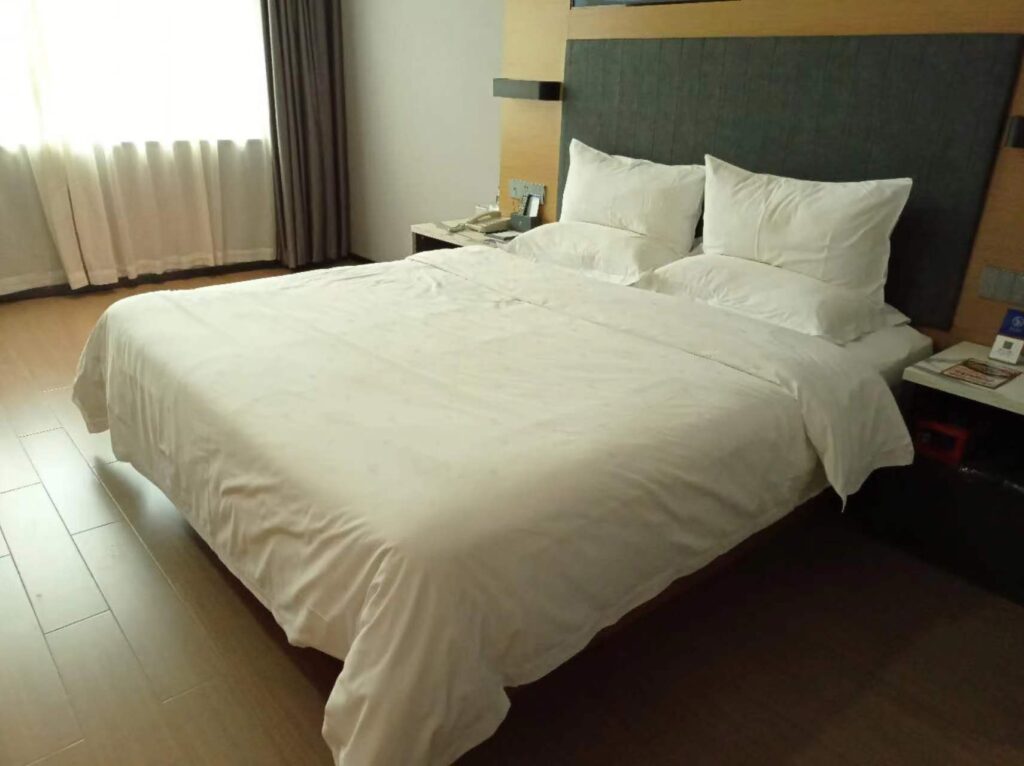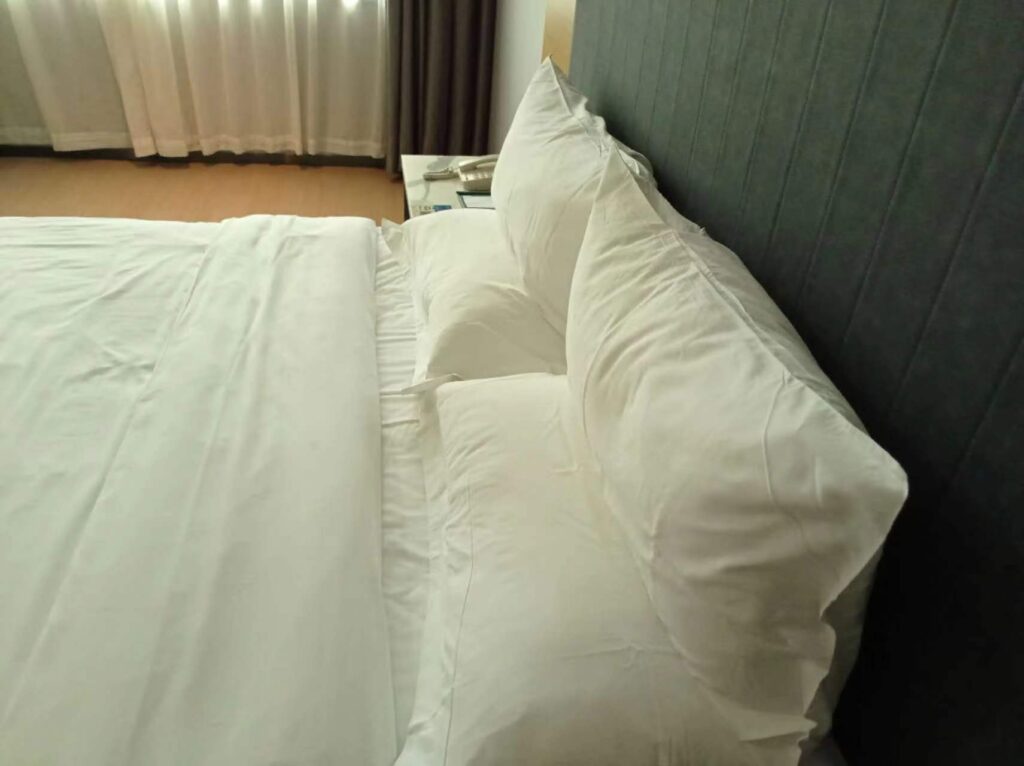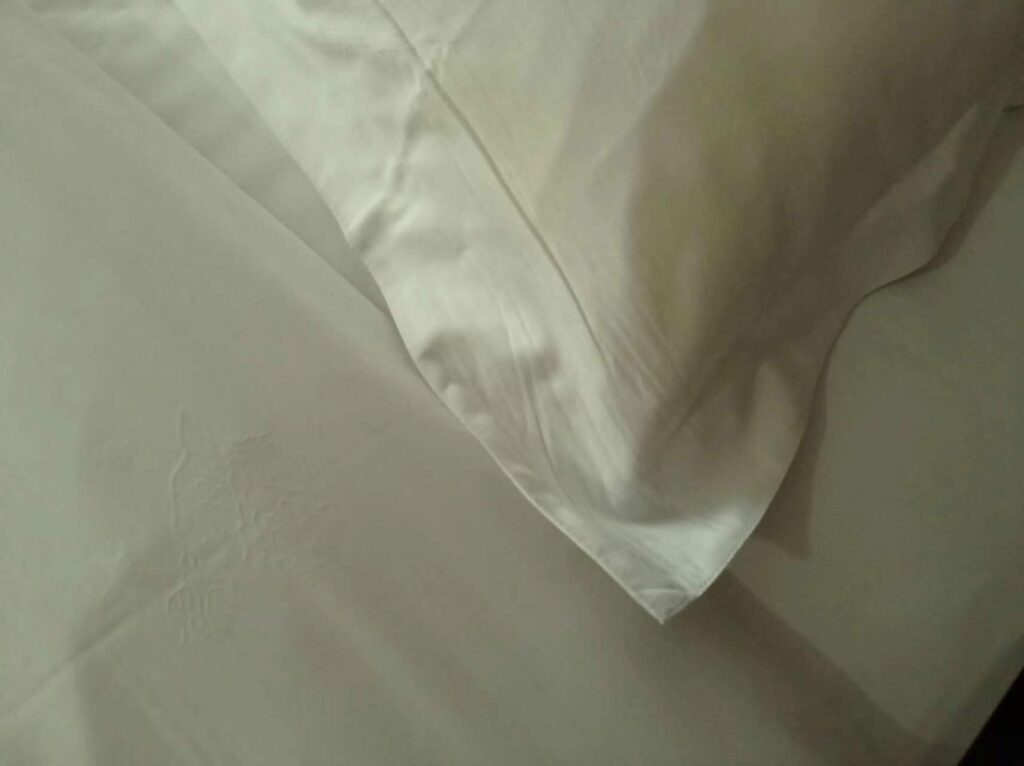The quality of hotel room linen is an important factor for customers to judge a hotel, and choosing good hotel linen is crucial for improving the hotel’s image.
The quality of linen can be identified primarily through the fabric, and the advantages of the fabric mainly include thread density, weight per square meter, strength/tear resistance/single yarn strength, fuzziness, colorfastness, shrinkage rate, and skewness. Ulencn.com would like to share a few tips on selecting hotel linen fabrics.
First, thread density:
- It refers to the total number of cotton yarns per inch.
- The format for expressing thread density is warpweft, for example, 110*90.
- Typically, the indicated thread density on fabric labels refers to the warp and weft density of the greige fabric. The bleaching and dyeing process can cause changes in the warp and weft dimensions. The warp may decrease by 2-4% due to elongation, while the weft may increase by 5% due to contraction. The total thread density of the fabric remains the same or slightly increases.
- Finished product notation: T200, T250, T300.
- The national standard for thread density is examined using weight per square meter. Strict control is exercised over the warp and weft weaving process of the linen in accordance with the national standards.

Second, fabric strength:
- Fabric strength is divided into tear strength and tensile strength.
- Tear strength refers to the resistance of the fabric to expansion when there is minor localized damage.
- Tensile strength refers to the pulling force the fabric can withstand per square meter.
- The level of strength is mainly related to the quality of the cotton yarn (single yarn strength) and the bleaching and dyeing process.
- Generally, good fabrics have better toughness, such as the finished products made from fabrics produced by 5-star brands.
Third, weight per square meter:
- It objectively reflects the amount of yarn used in the fabric (i.e., cost).
- Prevents the use of finer yarn counts as substitutes for thicker yarn counts.
- The measurement method involves using a circular cutter to take a 100 cm² sample of the fabric for weighing.
- The test results are compared to the standard value of the fabric. For example, at room temperature, 40S pure cotton T250 has a standard value of 135 g/cm². For example, the formula for calculating the weight per square meter of pillow fabric is 2500-3000 g/m².
Fourth, shrinkage rate:
- The shrinkage rate for pure cotton fabric is generally 5% in the warp direction and 5% in the weft direction.
- The shrinkage rate for polyester-cotton fabric is generally 2.5% in the warp direction and 2.5% in the weft direction.
- Pre-shrunk fabrics can slightly reduce the shrinkage rate. After pre-shrinking, the shrinkage rate of pure cotton warp and weft yarns is 3.5%. A friendly reminder from China Hotel Linen Network: When selecting the size of cotton hotel linen, consider the shrinkage rate of cotton fabric. For more details, please consult a professional linen consultant on the Ulencn.com.

Fifth, fabric skewness:
- Skewness is calculated as the degree of skewness/entire fabric width.
- Skewness mainly affects the flatness of the product.
- Currently, no dyeing factory in China can achieve 100% non-skewness.
Sixth, fabric fuzziness:
- Fuzziness is the phenomenon of excessive short fibers on the fabric surface.
- Consequences include high hair loss and pilling.

Seventh, colorfastness: Colorfastness includes wash fastness and rub fastness (for colored products).
These are the knowledge points shared by the Ulencn.com. Please feel free to contact us to learn more about hotel linen and pricing.